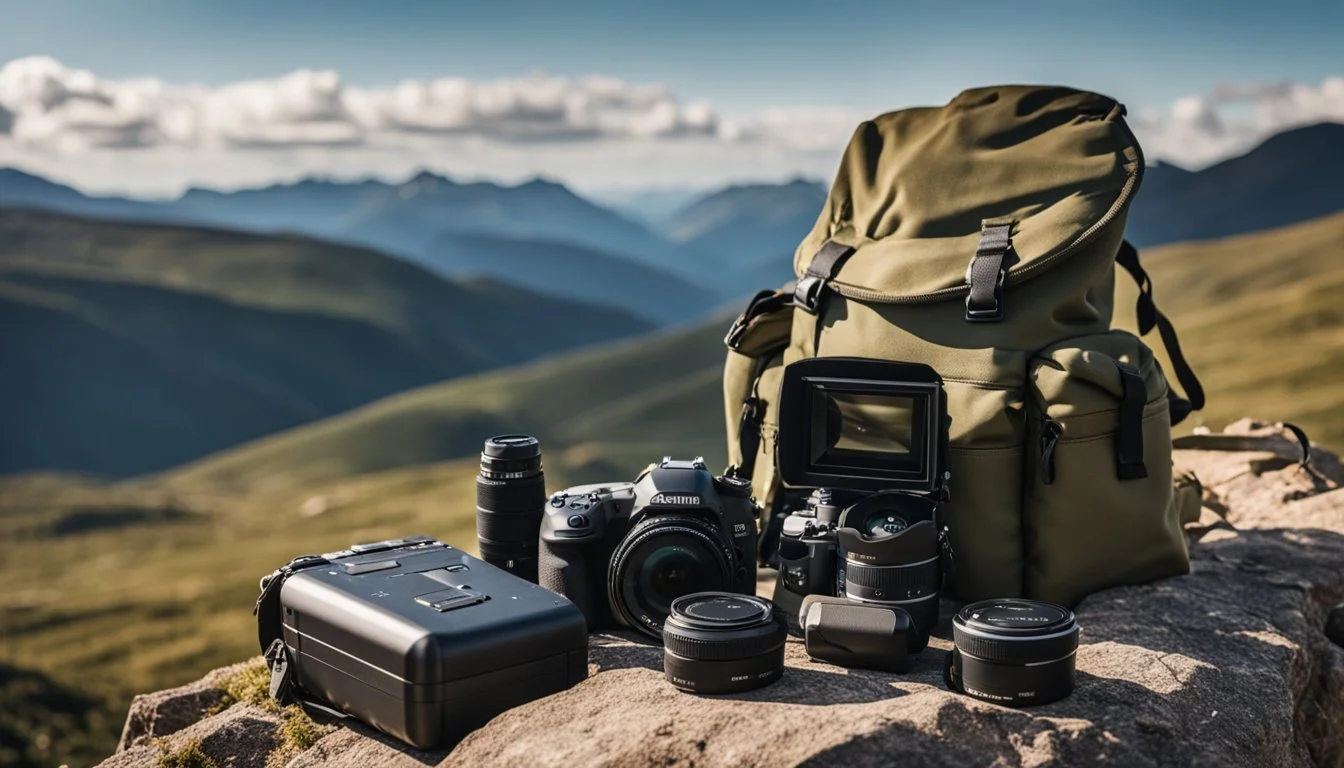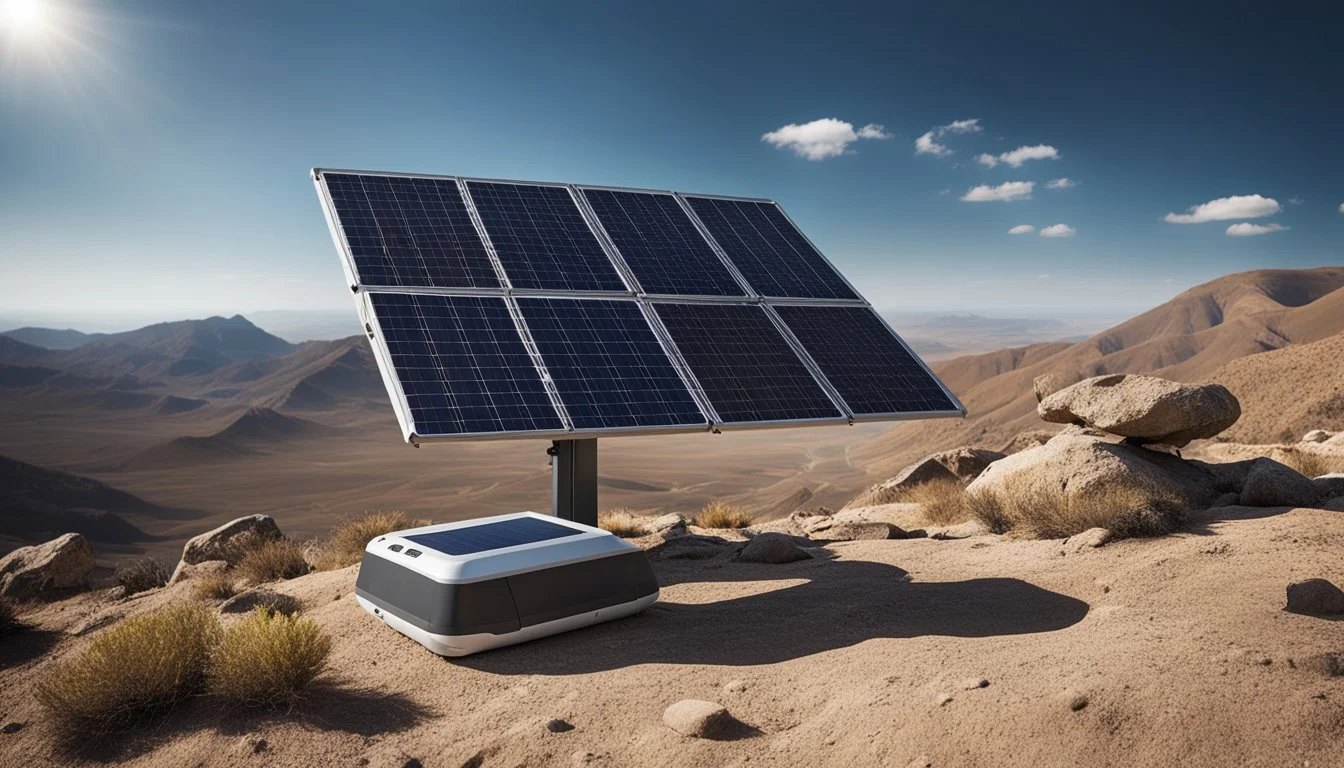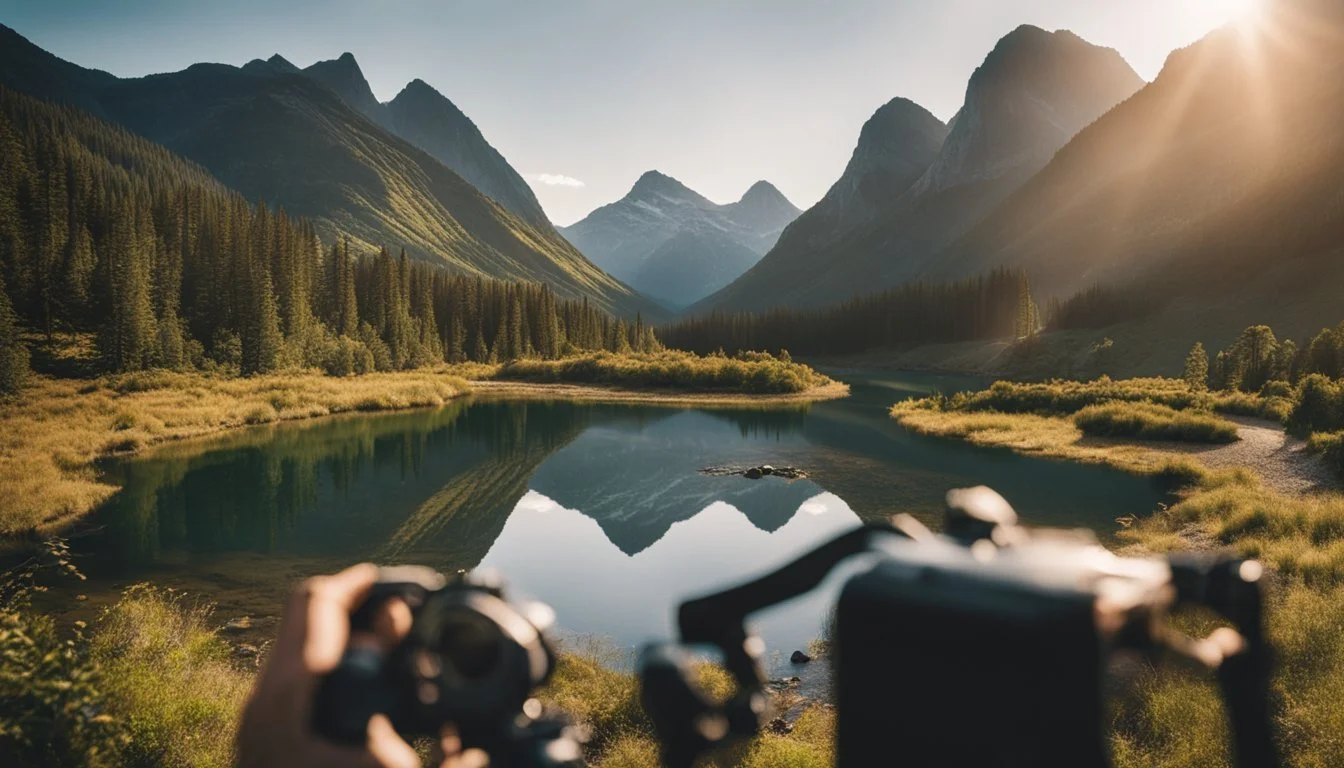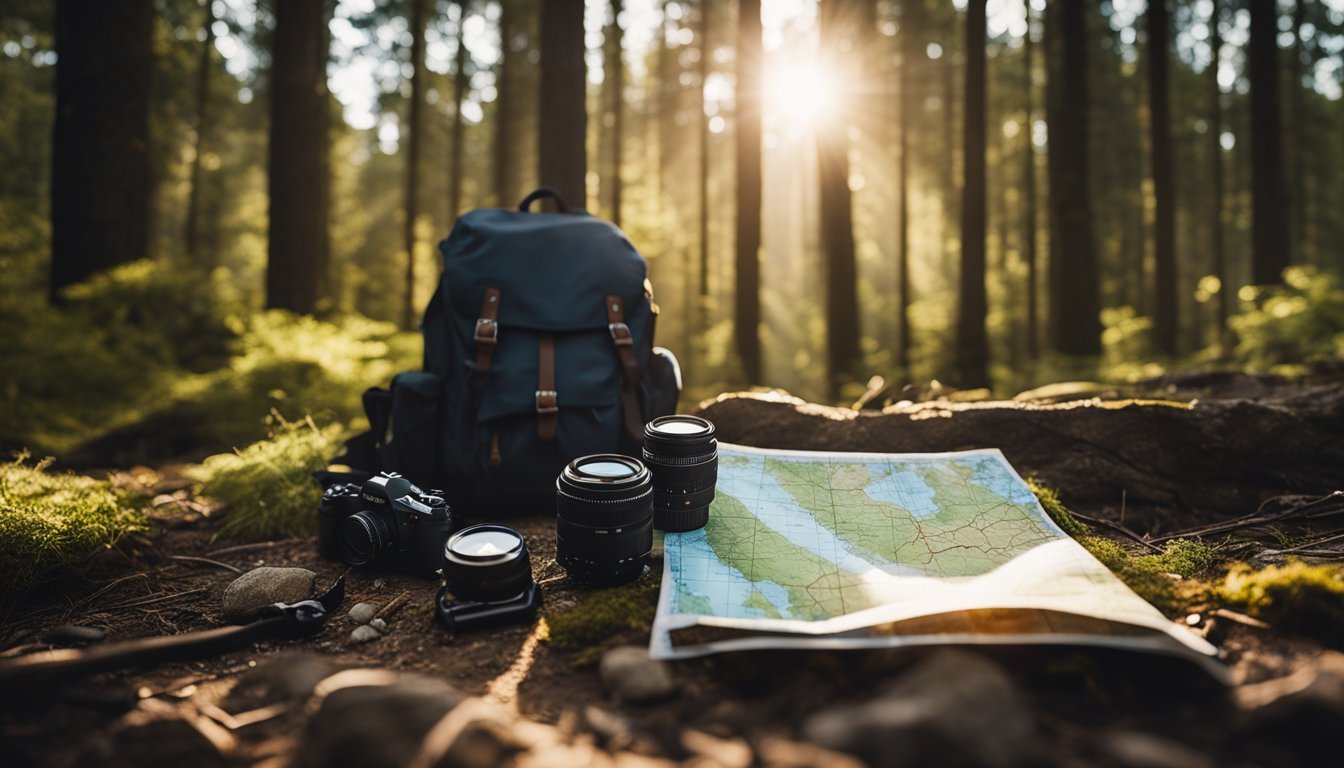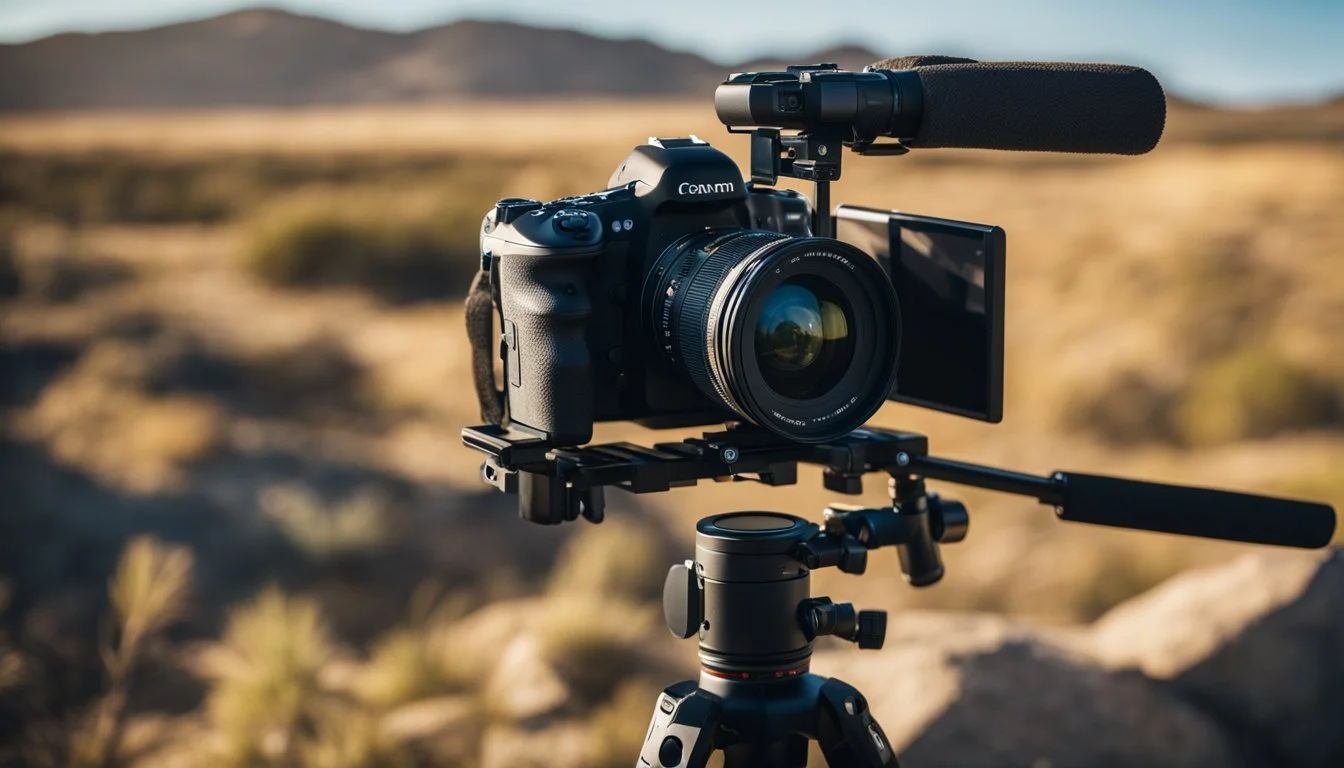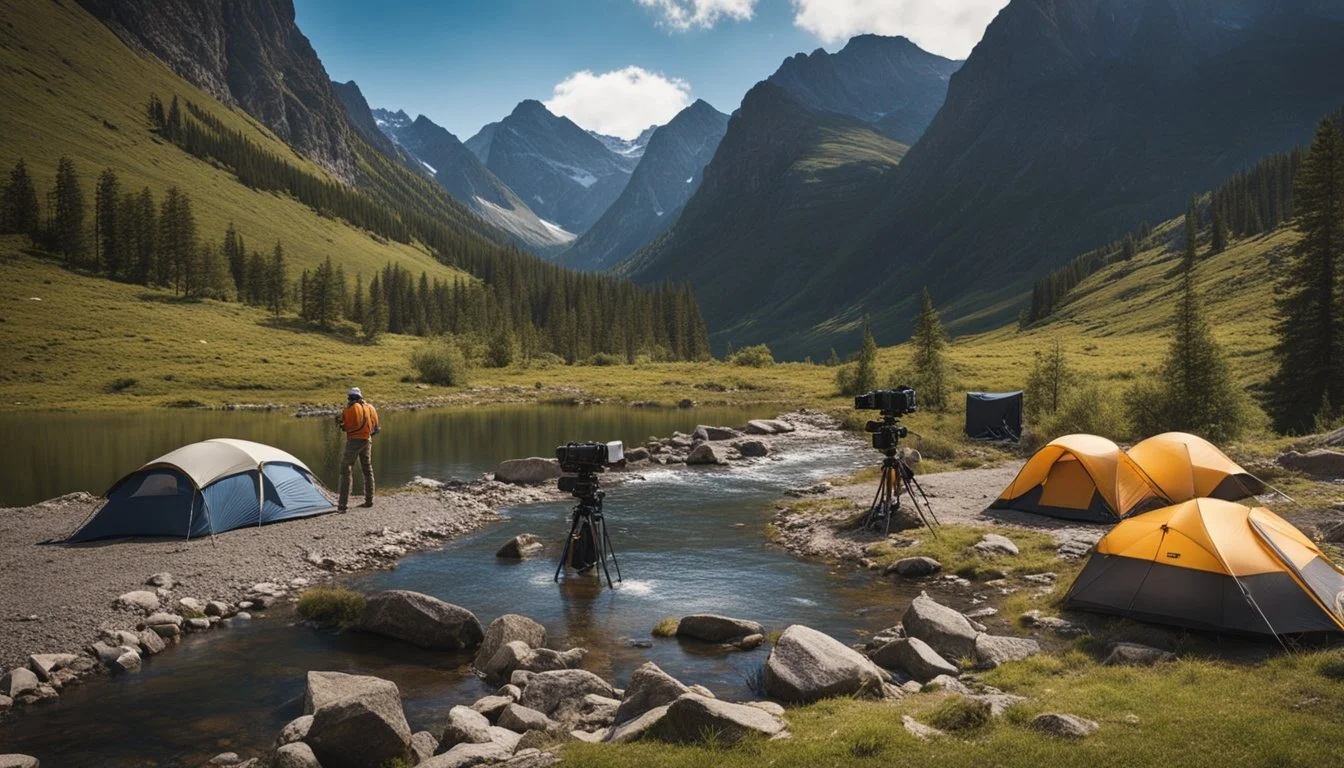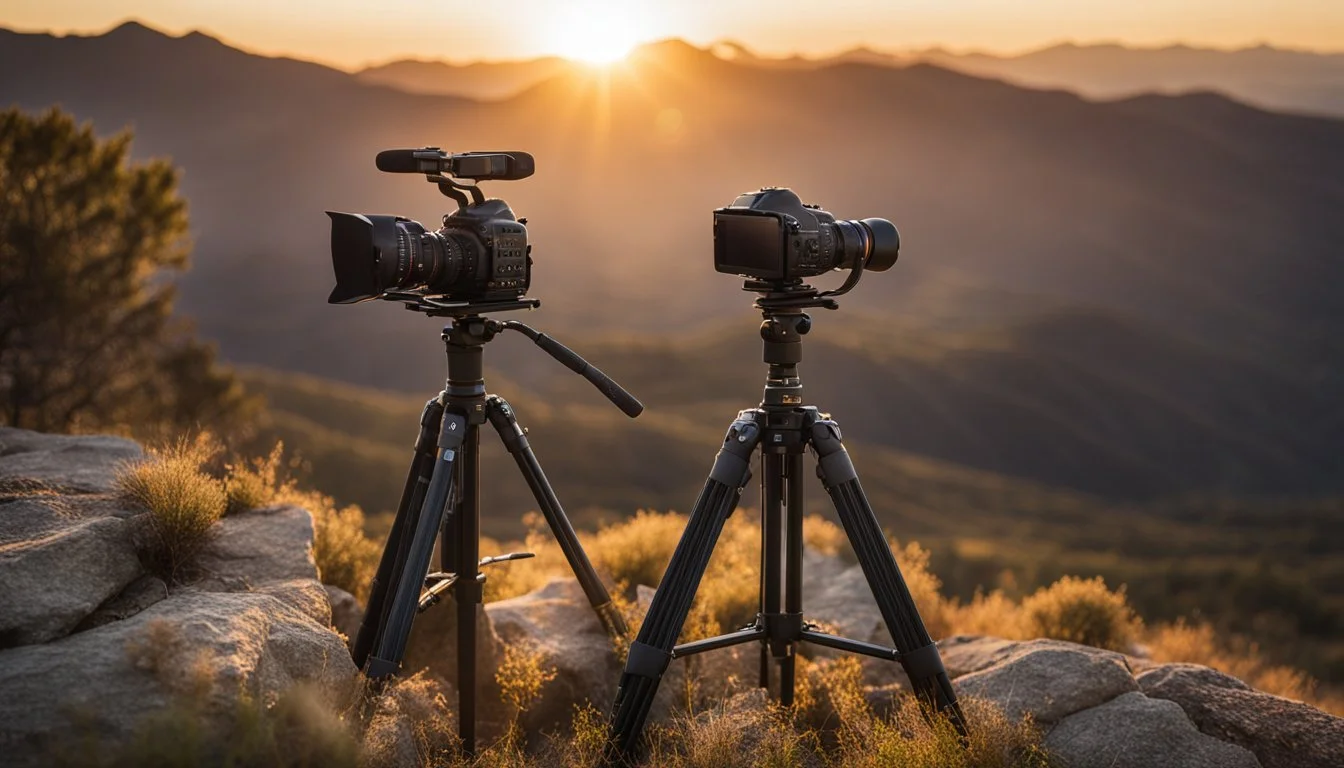14 Essential Tips for Filming in Remote Locations
Maximizing Efficiency and Safety in the Wild
Filming in remote locations presents unique challenges and demands meticulous planning and preparation. While the allure of untouched landscapes and raw natural beauty is undeniable, the logistical hurdles can be daunting. This article provides invaluable insights to ensure the success of your remote filming endeavors.
From preparing for unpredictable weather conditions to safeguarding expensive gear, remote shoots require a set of skills and strategies distinct from urban filming. Recognizing these differences and adequately preparing can significantly enhance the quality and efficiency of your project.
1) Carry Extra Batteries
In remote locations, access to power sources is often limited. It's crucial to carry extra batteries to ensure uninterrupted filming. This is especially important for longer shoots where power needs can quickly deplete available resources.
Use batteries specifically designed for your equipment. They provide better performance and reliability. Generic batteries may not offer the same level of efficiency and could fail when you need them most.
Consider rechargeable batteries as an eco-friendly option. Pair them with portable solar chargers or other renewable energy sources. This setup can help sustain longer shoots without the constant need for additional replacements.
Transport and store batteries properly to avoid damage. Extreme temperatures and rough handling can shorten battery life or render them unusable. Use protective cases and keep them in a cool, dry place.
Having a reliable supply of extra batteries ensures that your production can continue smoothly. This preparation minimizes downtime and maximizes productivity, making each shoot more efficient.
2) Use Lightweight Equipment
Selecting lightweight equipment is crucial when filming in remote locations. Heavy gear can slow down the crew and make transportation more difficult. Lightweight camera rigs and accessories provide ease of movement and flexibility, which is especially important in rugged terrains.
In remote environments, compact equipment minimizes the physical burden on the crew. Smaller, lighter gear allows for quicker setup and takedown, saving valuable time during the shoot.
Weather-sealed cameras and lenses are highly recommended. These protect against dust, moisture, and other environmental factors, ensuring reliable performance. This setup is essential for maintaining operational efficiency and protecting the investment in high-quality equipment.
Additionally, using lightweight drones can capture stunning aerial shots without requiring heavy and cumbersome flight gear. Portable lighting solutions can also offer great versatility and can be set up quickly, helping to keep the production nimble.
3) Research Local Weather
Understanding local weather patterns is crucial for filming in remote locations. Weather can be unpredictable, causing delays and safety concerns.
Filmmakers should consult multiple weather sources to get accurate forecasts. Advanced forecasting tools can help predict changes and plan accordingly.
Checking the historical weather data for the location helps anticipate potential challenges. For example, knowing the rainy season can prevent scheduling conflicts.
Additionally, local contacts and guides can provide valuable insight into weather conditions. They often have experience that can be critical for decision-making.
It's also important to have contingency plans for unexpected weather changes. Flexibility in the shooting schedule can mitigate weather-related disruptions.
Finally, having weather-resistant equipment ensures that adverse conditions don't halt production. Proper preparation makes a significant difference in the success of remote filming.
4) Solar Chargers
Filming in remote locations often means limited access to traditional power sources. Solar chargers provide a reliable and eco-friendly solution for powering essential equipment.
Solar chargers harness sunlight and convert it into electricity. They can be used to charge cameras, lights, and other electronic devices that are crucial for production.
Proper positioning of the solar panels is essential. Placing the panels in direct sunlight allows them to capture the maximum amount of energy. Ensuring the correct angle can enhance the efficiency of the charging process.
Solar chargers are lightweight and portable, making them ideal for locations that are difficult to reach. Since they have no moving parts and require minimal maintenance, they are practical for areas where repair services are limited.
To maximize usage, it's advisable to use solar chargers with built-in batteries. This setup ensures a continuous power supply, even during cloudy days or nighttime. By incorporating solar chargers, production teams can maintain a consistent workflow without the need for noisy generators.
5) Portable Power Banks
Portable power banks are vital for filmmaking in remote areas. They offer a reliable source of energy for camera and lighting equipment, essential for uninterrupted shooting.
One popular choice is the Anker PowerCore 26800 Portable Charger. Its 26,800mAh capacity ensures long-lasting power, keeping equipment running smoothly.
Filmmakers can benefit from models like the Goal Zero Yeti 200X Portable Power Station. This option is suitable for car camping setups, offering a larger capacity option for extended shoots.
Power banks come in various sizes and capacities, from compact models for cell phones to larger units capable of running cameras and lights. Selecting the right power bank depends on the specific demands of the shoot.
It’s essential to choose power banks that meet the needs of the production, offering the right balance of portability and capacity.
6) Invest in a Good Tripod
A reliable tripod is essential for filming in remote locations. Stability is crucial, especially on uneven ground. A good tripod helps achieve steady shots, reducing the risk of camera shake.
Certain shooting techniques, like long exposures and panoramas, are much easier to execute with a tripod. Long exposure shots, for instance, can make moving elements like water look smooth and elegant.
For added stability, it can be useful to position two tripod legs downhill if working on an incline. This setup minimizes the chance of the tripod tipping over due to sudden gusts of wind or accidental bumps.
Using a remote or cable release with your tripod is recommended. This prevents camera shake caused by manually pressing the shutter button. Alternatively, set a self-timer to avoid any direct contact.
Tripods also enable shots that are otherwise impossible handheld. For instance, flipping a tripod's center column upside down can allow for overhead shots, adding creative angles to your filming repertoire.
In remote locations, the right tripod ensures that filming remains consistent and high-quality. Investing in a robust, versatile tripod pays off by contributing to the overall professionalism of any production.
7) Sturdy Camera Bags
Reliable camera bags are indispensable when filming in remote locations. They safeguard your equipment from harsh weather and physical damage. The choices vary from sling bags, backpacks, roller bags, to hard cases. Each type has specific advantages based on the nature and length of your journey.
Sling bags, like the Baoluo Camera Sling Backpack, are ideal for short trips. They offer easy access and comfort. For longer excursions, a backpack such as the Thule Aspect DSLR Backpack provides better weight distribution and capacity.
Roller bags, such as the Think Tank Airport Roller Derby, are convenient for traveling through airports or cities, reducing the strain of carrying heavy equipment over long distances. For those needing maximum protection, a hard case like the Pelican 1150 Camera Case is essential.
When selecting a bag, prioritize water resistance and padding. These features protect against rain, dust, and impacts. Additionally, consider bags with customizable compartments to organize gear efficiently. A sturdy camera bag is not just about storage; it’s a crucial aspect of ensuring the longevity and functionality of your filming equipment.
8) Keep Gear Dry
Protecting equipment from moisture is crucial when filming in remote locations. Moisture can cause significant damage to cameras, lenses, and other gear. Using waterproof cases and bags can provide the necessary protection.
Invest in high-quality rain covers designed specifically for camera gear. These covers offer a snug fit and are effective in keeping water out.
Desiccant packets can help absorb any moisture that manages to get inside cases. Place them inside the equipment bags to reduce humidity levels.
A quick and accessible option is to use plastic bags. Wrap gear securely, ensuring minimal exposure to damp conditions.
Regularly check and dry your gear during shooting breaks. This can prevent lingering moisture and maintain equipment functionality.
9) Backup Memory Cards
When filming in remote locations, keeping multiple backups of memory cards is a crucial practice. Memory cards can fail or become corrupted, so relying on just one copy of your footage can be risky.
Use portable backup devices that allow for quick transfer from memory cards to a secure storage option. These devices often have built-in card readers, providing a convenient way to create duplicates without needing a laptop.
Always handle memory cards with care. Hold them by the edges to avoid touching the delicate gold contacts, which can be easily damaged by oils or dirt. Keeping cards clean ensures they function properly when needed.
Organize and label memory cards to avoid confusion. Knowing which cards have been backed up can streamline the process and reduce the chance of overwriting essential footage.
Keep backups in separate locations. If one set of cards gets lost or damaged, having another set stored safely ensures footage is not entirely lost.
Verify that data has been transferred correctly before reusing memory cards. Double-check the files on the backup device to ensure that they match the original footage. This step can save significant time and stress later in the editing process.
10) Local Fixer or Guide
A local fixer or guide can be invaluable when filming in remote locations. They bring in-depth knowledge of the area and can navigate the local customs and regulations effortlessly.
Local fixers often have established relationships with local authorities, making it easier to obtain permissions and permits necessary for filming. This can save valuable time and resources.
Additionally, they can recommend the most suitable spots for shooting, ensuring the crew gets the best possible footage without unnecessary hassle. Their familiarity with the terrain helps in avoiding potential hazards and logistical issues.
Communication barriers can also be mitigated with the help of a local guide, who can serve as an interpreter and bridge cultural gaps. This can be crucial for maintaining good relations with the local community.
Lastly, they often know trusted vendors for equipment rental, catering, and other necessities, streamlining the entire production process. Hiring a competent local fixer or guide can significantly enhance the efficiency and success of filming operations in remote areas.
11) Lightweight Clothing
When filming in remote locations, selecting the right clothing is crucial for comfort and efficiency.
Lightweight clothing is essential in various climates. It allows for ease of movement and helps regulate body temperature. In hot environments, breathable fabrics like cotton and linen are ideal. They wick away moisture, keeping the body cool and dry.
In colder climates, layering lightweight materials can provide warmth without adding bulk. Synthetic fabrics like polyester and nylon offer good insulation while remaining lightweight. These materials also dry quickly, which is beneficial in wet conditions.
Avoid heavy clothing that can restrict movement and add unnecessary weight to your gear. Opt for garments with practical features like multiple pockets for easy access to personal items and tools.
Neutral colors are practical choices, blending well with natural surroundings and avoiding distractions on camera. Light colors can also reflect heat, whereas darker shades may absorb it, which can be useful depending on the weather conditions.
Lightweight footwear is also important. It should provide good support and be suitable for the terrain. Consider hiking boots or durable sneakers that are both comfortable and practical.
Always test your clothing prior to the trip to ensure comfort and functionality over long periods. Proper attire can significantly impact productivity and overall filming experience in remote settings.
12) Protective Lens Filters
Protective lens filters serve as the first line of defense for camera lenses. They safeguard against dust, moisture, and accidental scratches. This is crucial in remote locations where environmental conditions can be unpredictable and harsh.
A commonly used type is the UV filter. While modern digital cameras have built-in UV protection, UV filters still provide a physical barrier. They also reduce haziness in bright outdoor settings, improving image clarity.
Another option is the Skylight filter which minimizes the blue cast often seen in outdoor photography. This filter can be beneficial when shooting landscapes or open skies.
Circular screw-on filters are popular due to their easy attachment and removal. These filters come in various sizes, ensuring compatibility with different lens diameters.
Carrying multiple filters may increase the weight slightly, but the protection they offer is invaluable. Spare filters can be a lifesaver if one gets damaged during the shoot.
13) Secure Permits
Securing permits is a critical aspect of filming in remote locations. Authorities often require a film permit to grant legal permission to shoot in specific areas. These permits help ensure that the film crew complies with local regulations.
The process of obtaining a permit typically involves submitting an application to the relevant authority. This may include providing details about the filming schedule, location, equipment, and crew size. Some locations might need additional approvals from local departments, such as traffic or police, if the shoot impacts public areas.
Once approved, the film permit must be kept on hand during the shoot. This document serves as proof of official authorization, enabling the crew to film without legal issues. It's essential to adhere to all conditions specified in the permit to avoid fines or disruptions.
In remote areas, the permitting process can be unique due to specific local regulations or environmental considerations. Filmmakers should research and understand the requirements of the particular location. Communicating with local authorities early in the planning stage can help streamline the process and address any potential concerns.
Investing time in securing permits can save filmmakers from legal complications and ensure a smooth shoot.
14) Wide-angle Lenses
Wide-angle lenses are indispensable tools for capturing expansive scenes in remote locations. They offer a broad field of view, typically 35mm or less, allowing filmmakers to include more of the landscape in a single frame.
These lenses are especially useful for emphasizing the scale of vast environments. Filmmakers can use them to create a sense of immersion, drawing the viewer into the scene.
In rugged terrains, wide-angle lenses can enhance the visual impact of natural elements such as mountains, forests, or deserts. They also enable the capture of intricate details in the foreground, providing a dynamic range of focus.
When filming, controlling distortion is crucial. Wide-angle lenses can exaggerate lines and angles, which can either enhance or distort the visual narrative depending on the shot's purpose.
Versatility is another key advantage. Whether shooting a sweeping landscape or an intimate close-up, these lenses adapt well to varying shooting conditions. This flexibility makes them a valuable asset in any filmmaker's toolkit.
Using wide-angle lenses requires understanding how to balance elements within the frame. Careful composition ensures that the captured image remains both engaging and informative, providing viewers with a clear perspective of the remote location.
Pre-Production Planning
Careful pre-production planning is crucial for filming in remote locations. It involves thorough scouting, securing necessary permits, and precise budgeting to ensure a seamless shooting process.
Location Scouting
Location scouting involves identifying and evaluating potential filming sites. This requires visiting locations multiple times and assessing factors like lighting, accessibility, and safety. The crew should consider the geographical and logistical challenges each location presents. A well-scouted location can save time and resources during the actual shoot by minimizing unforeseen problems.
Permits and Legal Requirements
Securing the correct permits and understanding legal requirements is essential. Every location has its own set of regulations, which can include filming permissions, environmental protections, and local laws. It's important to contact local authorities early and submit permit applications well in advance. Legal compliance ensures that the production does not face delays or fines.
Budgeting and Resources
Budgeting involves allocating funds for all aspects of the shoot, including equipment, crew, travel, and contingency plans. Resources must be procured and managed wisely to avoid overruns. Having a detailed budget helps in anticipating costs and securing necessary resources ahead of time. This reduces the risk of running out of funds and ensures that all logistical needs are met efficiently.
Equipment Essentials
When filming in remote locations, having the right equipment is crucial. Key items include high-quality cameras and lenses, reliable audio gear, and robust power supplies with backups to ensure uninterrupted production.
Camera and Lenses
Selecting suitable cameras and lenses is a priority. Filmmaking cameras offer superior image quality due to larger sensors compared to smartphones. High-quality lenses provide flexibility in various lighting conditions and help capture detailed shots.
Protective gear is essential to shield the equipment from outdoor elements like rain and dust, ensuring longevity and consistent performance. Lightweight and versatile lens options, such as zoom lenses, can adapt to different shooting scenarios and help limit the amount of gear needed on-site.
Audio Gear
Clear and reliable audio gear is indispensable for ensuring high production quality. Directional microphones and lavaliers are excellent for capturing dialogue and ambient sounds in remote settings.
Wireless audio systems can offer flexibility, but ensure backup cables are available in case of signal issues. Windshields or windjammers can reduce noise during outdoor shoots. Monitoring audio levels consistently is crucial to catch issues early and avoid reshoots.
Power Supply and Backup
Shooting in remote locations often means limited access to power sources. Portable power banks and solar chargers are valuable for keeping equipment charged. Extra batteries for cameras, audio gear, and other devices are essential to avoid interruptions.
Invest in portable generators if heavy-duty power is required. Always carry multiple backup power options to prepare for unexpected power drains. Ensuring all power sources are charged and readily accessible can prevent delays and keep the production on schedule.
On-Location Best Practices
When filming in remote locations, safety, weather preparedness, and cultural sensitivity are critical. These best practices ensure a smooth and efficient production process.
Safety Precautions
Safety remains paramount when filming remotely. Teams should carry first-aid kits tailored to potential health risks specific to the location. It's wise to have emergency communication devices like satellite phones, especially in areas with poor cellular coverage.
Mapping out the closest medical facilities and understanding evacuation routes can be life-saving. Film crews should be trained in basic survival skills, such as fire-starting and water purification. Always have a backup power source for essential equipment to ensure continuous communication.
Dealing With Weather Conditions
Weather can be unpredictable and harsh in remote locations. Check weather forecasts regularly and have plans for different scenarios, like sudden rain or extreme heat. Use waterproof cases for sensitive equipment and ensure that all crew members have appropriate clothing for the expected conditions.
Shelters and tarps are essential for protecting both the team and equipment. Carry spare power sources and protective gear to mitigate damage from weather-related issues. Remember, weather affects not just comfort but also the functionality of gear.
Local Interaction and Cultural Sensitivity
Engaging with local communities respectfully enhances the filming experience and ensures cooperation. Research the local customs and practices thoroughly before arrival. Hiring local guides or consultants helps navigate cultural nuances and fosters goodwill.
Respect for local traditions and sacred sites is non-negotiable. Seek permission before filming in culturally sensitive areas. Prioritize clear communication and honor agreements made with local residents.
By focusing on safety, preparedness for weather conditions, and cultural respect, filming in remote locations becomes a more efficient and rewarding endeavor. These practices not only protect the crew and equipment but also build positive relationships with the local communities.


